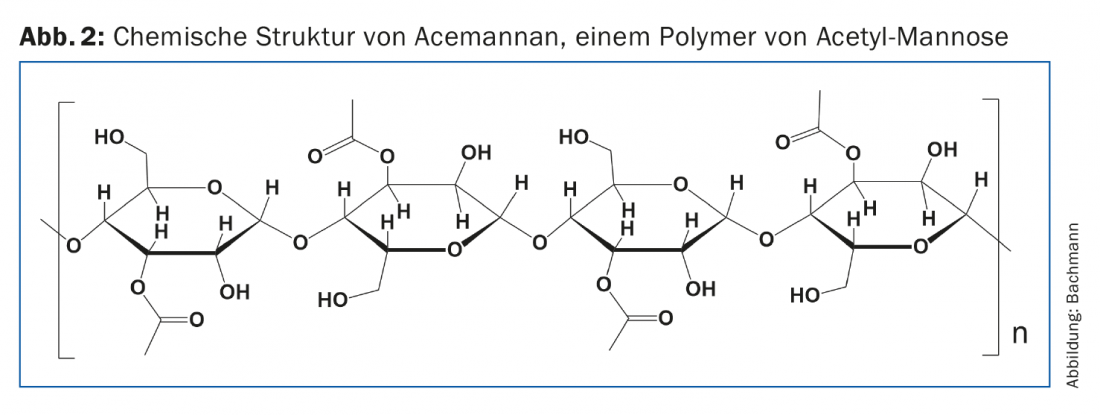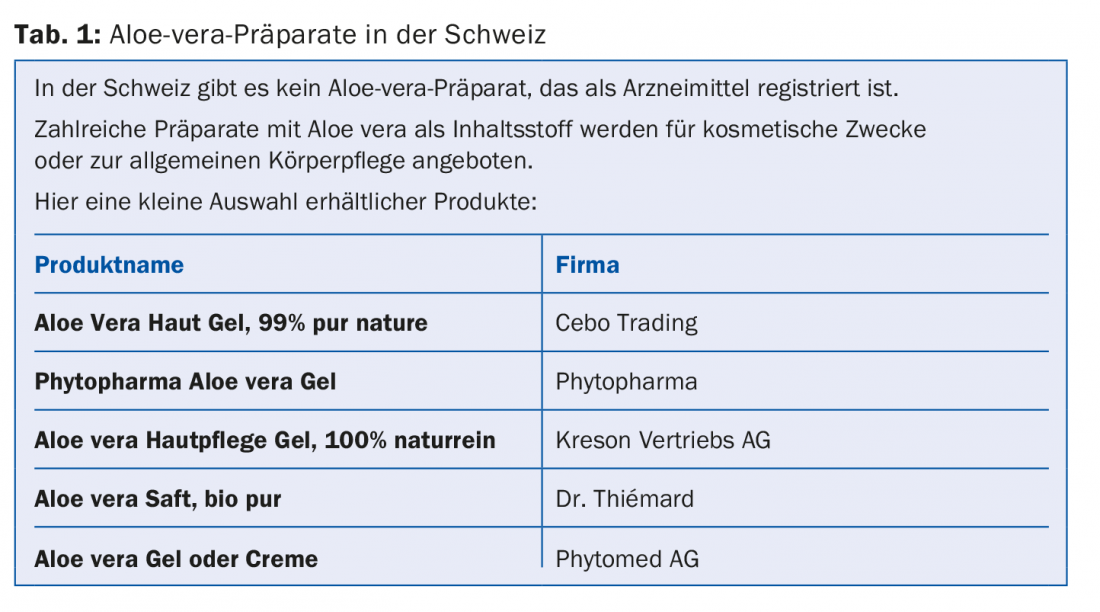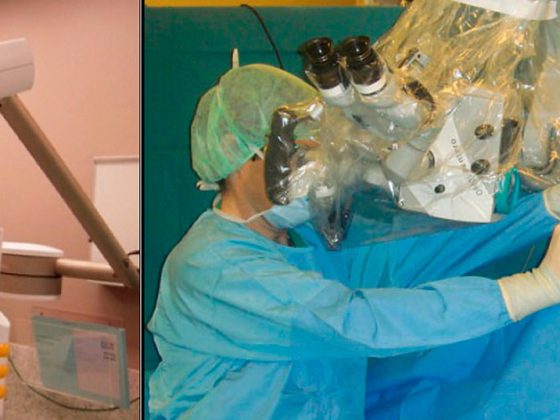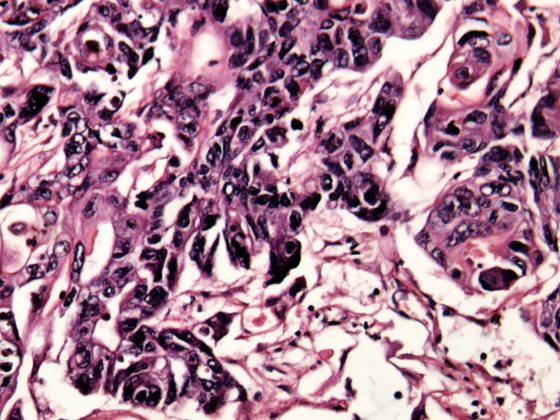Aloe vera is a plant with very interesting medicinal and cosmetic properties. Because these are very often presented in advertising in a one-sided and exaggerated way, many professionals do not deal with the documented possibilities of this medicinal plant. However, it is worthwhile to study the existing literature in detail. One can find serious studies that prove that with the use of aloe vera preparations, especially gels, quite remarkable successes can be achieved.
The “miracle plant
On the Internet and in marketing articles of certain companies, many plants are presented as “miracle plants”, or plants with miraculous effects. Aloe vera is one of these plants. Euphoric statements can be read about them on the Internet, as this randomly chosen description makes clear: “Aloe vera is a medicinal plant with thousands of years of tradition. Whether for wound treatment, skin diseases, gastrointestinal complaints, joint pain, gingivitis or sunburn: Aloe vera is THE all-rounder in naturopathy. Many effects have long been scientifically confirmed, so that the in no medicine cabinet should be missing.” (www.zentrum-der-gesundheit.de).
Unfortunately, in professional circles, such praise often has the opposite effect of what it was intended to do. Exaggerated promises of healing, combined with references to the “scientifically long since confirmed” efficacy, cause many professionals to turn away from the subject altogether. And they then do not bother to separate the wheat from the chaff, i.e. to check what scientifically documented efficacy the corresponding medicinal plant actually possesses and how it could be used successfully.
Aloe vera
But what kind of plant is aloe vera? And what is their clinically documented effectiveness? – Here is to present some of the “wheat”. The focus is on those cosmetic possibilities and medical applications that are supported in the research literature. Some typical studies will be presented, without being able to deal exhaustively with the published literature.
Botany
Aloe vera (Aloe barbadensis) is a plant of the grass family (Xanthorrhoeaceae). The plant has up to 16 leaves, which grow to 40 to 50 cm long and lie rosette-like against the stem (Fig. 1) . The original home of Aloe is probably the area around Saudi Arabia and Yemen, but the plant now also grows in southern Europe and Asia. Furthermore, there are aloe cultures in tropical and subtropical regions. Medically known are Aloe barbadensis, also called Curaçao aloe, and Aloe ferox, also called Cape aloe.

Medical applications
Advertising mainly reports about the beneficial properties of aloe vera juice on the skin. What cosmetic and medicinal properties are considered to be assured?
Used for centuries as a laxative: An undisputed effect of aloe has been known for centuries: The thickened juice is used to make a laxative, which has a strong and rapid laxative effect due to the anthraquinone ingredients. Besides Aloe barbadensis, Aloe ferox can also be used for this purpose. Aloe used to be a component of many laxatives. However, the anthrachionone-containing laxatives then came under unjustified criticism because of the alleged bowel-damaging side effects and a potential for dependence. Nevertheless, today there are only a few laxative drugs that have aloe as an ingredient.
Antiphlogistic effect and wound healing: an Iranian study reported an application from traditional Persian medicine in which artificially induced second-degree burns on rats were treated with a mixture of milk, honey, and aloe vera juice and examined on the first, 14th, and 28th days after the event [1]. Compared to a control group, the study drug resulted in better healing by accelerating cell proliferation and wound closure and leading to higher collagen fiber density. However, the limitation of this study is that aloe vera juice was not tested alone, but in combination with milk and honey. So the other two components may have contributed significantly to the cure.
Acne vulgaris: Also in Iran, a clinical trial [2] was conducted comparing the efficacy of combination therapy with tretinoin and aloe vera with that of tretinoin alone. In this randomized, double-blind comparative study, 60 subjects with mild to moderate acne vulgaris were treated for eight weeks with either a combination of a tretinoin cream (0.05%) together with an aloe vera gel (50%) or with the tretinoin cream alone.
The combination of tretinoin and aloe vera proved to be significantly more effective than tretinoin alone in terms of inflammatory (p=0.011), non-inflammatory (p=0.001) and in terms of total (p=0.003) acne-related skin lesions.
Cosmetic applications: Commercials, promotional flyers, and marketing articles disguised as scientific papers touting aloe vera preparations usually refer to the cosmetic effects of gels and juice. Such gels are supposed to smooth the skin and delay or even stop the aging process. There are some studies that have investigated these cosmetic effects of aloe vera. Most publications are pharmacological studies performed in vitro or in vivo.
Nanostructures
Substances processed into nanostructures appear to have additional benefits for beneficial effects on the skin. A recently published study describes this process in detail [3]. The moisturizing and skin smoothing effect of aloe vera preparations is also documented there. When a gel of aloe vera is incorporated into a nanostructure, its cosmetic effect increases in the process.
Fibroblast stimulation
A recent study published by a Taiwanese team reported the protective effect of aloe on heat-induced oxidative stress on fibroblasts [4]. The same effect of aloe vera gel is reported by Tanaka et al. who describe in their publication [5] a combination of an in vitro study with a clinical study. In the in vitro study, they investigate the ability of aloe vera juice to stimulate human skin fibroblasts. These increased the formation of collagen and hyaluronic acid by one and a half to two times due to the influence of the juice. The beneficial effect on the skin was attributed to the following ingredients in the study by Tanaka et al: Polysaccharides, amino acids, lipids, sterols and tannins. Thereby acemannan (Fig. 2) is the most important polysaccharide in Aloe vera.

In the second part of the study, which was randomized, double-blind, and placebo-controlled, they administered an aloe vera powder containing 40 micrograms of aloe sterols but almost no anthraquinones to over 40-year-old Japanese women daily for eight weeks. At the end of the study, a moderate increase in skin hydration was observed in the verum group compared to the placebo group. However, the difference did not show significance. In a subgroup evaluation, however, a significant difference in the size of the skin folds was found in favor of the verum group.
A similar result was shown in a study published in 2009 [6]. The research team led by Takahashi incorporated juice from aloe vera into liposomes to increase bioavailability. These liposomes with a diameter of less than 200 nm contained various concentrations of Aloe vera gel. They were then joined with neonatal skin fibroblasts to examine their effect on the proliferation of collagen synthesis. This liposomal aloe vera gel caused a significantly higher proliferation rate than aloe vera gel that was not incorporated into liposomes. The researchers observed the same effect when they investigated the proliferation of keratinocytes using liposomal gel on the one hand and ordinary Alo-vera gel on the other.

Summary
If, despite the flood of euphoric praise, you make an effort to locate serious studies on the efficacy of aloe vera, you will be rewarded: in addition to the laxative effect of aloe vera, which has been known for centuries, wound-healing, anti-inflammatory properties are considered to be assured; likewise, its efficacy in alleviating acne vulgaris has been proven.
The cosmetic effect of aloe vera juice, or corresponding preparations, has also been documented in studies: When aloe vera is incorporated into liposomes, which are nanoparticles that stimulate fibroblasts, this leads to better skin hydration and can smooth the skin.
Literature:
- Farzadina P, et al: Anti-inflammatory and Wound Healing Activities of Aloe vera, Honey and Milk Ointment on Second-Degree Burns in Rats. Int J Low Extrem Wounds 2016, May 23. doi: 10.1177/1534734616645031. [Epub ahead of print]
- Hajhedari Z, et al: Effect of Aloe vera topical gel combined with tretinoin in treatment of mild and moderate acne vulgaris: a randomized, double-blind, prospective trial. J Deramtol Treat 2014(2); 25: 123-129.
- Palanivel G, Dong-Kug C.: Current application of phytocompound-based nanocosmeceuticals for beauty and skin therapy. International Journal of Nanomedicine 2016 May 11; 11: 1987-2007. doi: 10.2147/IJN.S104701. eCollection 2016.
- Liu FW, et al: Aloin Protects Skin Fibroblasts from Heat Stress-Induced Oxidative Stress Damage by Regulating the Oxidative Defense System. PLoS One Dec 4; 10(12): e0143528. doi: 10.1371/journal.pone.0143528. eCollection 2015.
- Tanaka M, et al: Effects of plant sterols derived from Aloe vera gel on human dermal fibroblasts in vitro and on skin condition in Japanese women. Clinical, Cosmetic and Investigational Dermatology 2015; 8: 95-104.
- Takahashi M, et al: Liposomes encapsulating Aloe vera leaf gel extract significantly enhance proliferation and collagen synthesis in human skin cell lines. J Oleo Sci 2009(12); 58: 643-650.
HAUSARZT PRAXIS 2016; 11(9): 2-3











